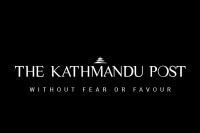Miscellaneous
A pair of hauntings
Watching two new films back-to-back—both pertaining, broadly, to the realm of supernatural fiction, but utterly dissimilar in most other ways—has made for some interesting observations.
Obie Shrestha
Watching two new films back-to-back—both pertaining, broadly, to the realm of supernatural fiction, but utterly dissimilar in most other ways—has made for some interesting observations.
The first of these was the Andy Muschietti-directed (Mama) live-action adaptation of Stephen King’s It, comprising the second attempt to translate the 1986 horror tome—the very same that brought coulrophobia to the masses, courtesy of the murderous, malicious Pennywise—for the screen after the campy 1990 miniseries starring Tim Curry.
The other was David Lowery’s (Pete’s Dragon) curious meditation on love, loss and the afterlife in the form of A Ghost Story.
While both projects have to do with persons being haunted by a non-human entity—though A Ghost Story is technically from the perspective of the haunter himself—they are vastly different in terms of treatment and overall effect, and examined together, have something to tell us about the art of mining fear and tension from the mundane.
It opens in 1988 in the small town of Derry, Maine. School has just let out for the summer, and The Losers—as a gang of young misfits have been christened by their more popular contemporaries—are happy for the respite the holidays allow them from classroom bullies.
We have quiet, dependable Bill (Jaeden Lieberher), hyperchondriac Eddie (Jack Dylan Grazer), nervous Stanley (Wyatt Olef), and motor-mouth Richie (Finn Wolfhard) comprising the original members of the group, later joined by Ben (Jeremy Ray Taylor), Mike (Chosen Jacobs) and only girl Beverly (Sophia Lillis), all victims of persistent abuse from the teenaged Henry Bowers (Nicholas Hamilton) and his posse.
But there are forces far more sinister than Bowers at work in Derry, as the group soon discover: you see, children have been disappearing one by one over the past year—Ben’s brother among them—and turns out, this isn’t the first time this has happened.
The more they learn about the town’s dark history, the patterns of death and disaster stretching back over the years, the closer the Losers come to It—that shape-shifting, mind-muddling stuff of nightmares that feeds on fear.

A Ghost Story, meanwhile, is a much more sombre affair. C and M (Casey Affleck and Rooney Mara) are an everyday young couple—in love one minute, fitted tenderly around each other like spoons, then bickering the next—the sort of stuff that makes up your typical long-term relationship.
Until the day C is killed in an accident and M finds herself staring down at his rigid body in the hospital morgue. Soon after she leaves, though, C rises—now a ghost and invisible to all—and heads back to their home.
Here, he is to be a permanent fixture, watching as his lover mourns for him, gradually moves on and out of the house, and another tenant takes over, and another and another, and the house itself is torn down and resurrected, until time is spinning forward and backward with seemingly no end or beginning.
Anyone who’s read It will know it’s not made for easy adaptation, not only in terms of size, but in capturing that particular tone that makes King’s works so gripping—it’s never just about the scary monster in question, but more to do with how he uses these hauntings to reveal the deeper, far scarier evils and anxieties inherent in everyday life.
The book might have seemingly revolved around the antics of a crazed clown, but it was in large part a paean to the loss of innocence that comes with growing up, with learning about the apathy and cruelty that humans are capable of.
When the film focuses on these terrors—a father whose hand lingers a little too long, a little too proprietarily on his pubescent daughter; a mother going to undignified lengths to keep her son at a safe distance from the world; an entire town that refuses to acknowledge that children are being haunted and killed—it’s wonderfully effective, but Muschietti unfortunately decides against devoting too much time to such ideas.
Instead, he opts for the sort of conventional special-effects pileup that we’ve grown increasingly inured to over the years, punctuated with predictable regularity by easy jump-scares. Indeed, Pennywise himself pops up so often and with such exhibitionist gusto that by the halftime mark, much of the sense of danger and mystery associated with the character has dissipated, making him more an annoyance than a real threat.
In contrast to this is the palpable CGI-averseness of A Ghost Story, where the titular apparition is represented by an actor under a white sheet with holes cut out for eyes—a gamble if there ever was one, but one that pays off.
Combined with the square-ish ratio in which it is framed, giving it a low-key, home-video sort of quality, and an evocative soundtrack by Daniel Hart, the gimmick works surprisingly well, turning out a strange, poignantly poetic experience.
Part of the effect is also owing to Lowery’s instinct to slow down and let scenes just breathe, sometimes to overwhelming limits—there’s one long take, for instance, of a character eating an entire pie to block out her grief, and her belated beloved watching on helplessly from a distance, that is almost unbearably prolonged, but unforgettable.

There will be those who find Ghost Story’s abstractions—on the elasticity of time, and the search for meaning and purpose in lives that ultimately comprise but miniscule dots in the grand expanse of history—a little on the pretentious side.
I’ll admit, there are times it does go a bit over, such as in the scene where a hipster philosopher played by Will Oldham tries to capture the film’s “message” in a long, rambling monologue.
But such moments of affected self-consciousness aside, there is something uniquely mesmerizing—and, in its own way, more terrifying than any of the calculated horrors of It—about what Ghost Story is trying to tell us about existence and suffering.
The child actors in It are, thankfully, all reliable—particularly Taylor and Lillis—and despite being rather one-dimensional characters, manage to whip up a feeling of believable affection and camaraderie.
Skarsgård is a no-contest improvement over Curry as Pennywise, and is clearly enjoying hamming it up here.
As for cast highlights in Ghost Story, we need go no further than Affleck, who—as absurd as it might sound—offers up an exceedingly moving, affecting performance, all while covered from head to toe in a sheet, managing to convey multitudes with a slow craning of the neck, a wave of the hand, and sheer stillness.
It concludes with hints of a sequel, so there might be room yet for redemption. In other words, in stretching the adaptation to the grown-up versions of these kids, filmmakers have an opportunity to do more to capture King’s vision and voice, and hopefully more successfully resist pressures to inject big-budget digital pyrotechnics than Muschietti has been able to do.
Ghost Story, meanwhile, doesn’t need or attempt continuation—it’s a perfectly contained, thought-provoking reverie that I’d be happy to revisit and recommend.




 14.87°C Kathmandu
14.87°C Kathmandu










